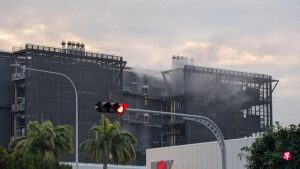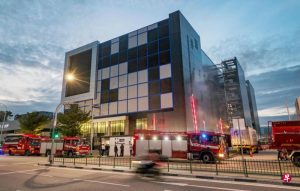HIGHLIGHT
Handicare by Savaria
GalaGold In IMX 2024
Prepared by Ryan Yau
Hong Kong to require taxis to install GPS, e-payment and camera systems in next 2 years
In a paper submitted to the Legislative Council on Monday, the Transport and Logistics Bureau said it aimed to require all taxis to install electronic payment options by the end of 2025 and have the necessary surveillance systems one year later.
“In the long term, requiring all taxis to install in-car cameras, dashcams and global positioning systems [GPS], as well as requiring all taxi drivers to provide electronic payment options, will help enhance the overall quality and image of taxi services,” it said.
The following are the requirements for cabin cameras:
– Must support day and night photography, and clearly capture the appearance of the driver and all passengers
– Must have recording function
– Resolution must be 720P or above
– All audio and video recordings must be strictly encrypted
– The device cannot provide the driver with a video view of the cabin through the video display
The following are the requirements for driving recorders:
– A clear view of the scene in front of the vehicle must be taken
– Resolution must be 720P or above
– All video recordings must be strictly encrypted
Article source : South China Morning Post
NEWS LETTER NOVEMBER 2024
Fire in Alibaba Cloud computer room: How should data centers respond to lithium battery explosions?
Since the fire broke out at around 8AM on September 10, by 5PM 11th Sept, the computer room fire caused abnormal network access and some cloud product services in Availability Zone C of Alibaba Cloud Singapore has lasted for 33 hours, and no fire has been completely eliminated. According to foreign media, the incident has caused severe disruptions to services hosted by major technology companies such as Lazada and ByteDance.

Source: Singapore Lianhe Zaobao

Source: 8 Vision News Network
The response to lithium battery fires mainly includes two aspects: rapid fire extinguishing and efficient cooling. Rapid fire extinguishing is to significantly reduce the thermal damage caused by flames to adjacent batteries and other equipment; efficient cooling is to suppress the chain decomposition reaction inside the battery, prevent the battery from re-igniting and thermal runaway, and can also effectively reduce the impact on adjacent batteries. Among the fire extinguishing agents, perfluorohexanone has shown the ability to quickly extinguish open flames outside the battery. It has a high safety margin and is friendly to the environment. After eruption, it can quickly vaporize, quickly absorb a large amount of heat, and isolate oxygen in the air, to achieve suffocation and fire extinguishing. The inadvisability of water firefighting is determined by the characteristics of lithium batteries. When a fire breaks out in a lithium battery, moisture may cause the battery to short-circuit, thereby exacerbating the fire. In addition, water reacts violently with the positive and negative electrode materials and electrolyte of lithium batteries, and the gas and heat generated may cause explosions and aggravate fire accidents. Some people also believe that water can be an effective means to extinguish fires and suppress re-ignition. Regarding the cause of the lithium battery explosion, the industry insider pointed out that the safety of the lithium battery itself has been verified in many aspects, and this incident may be affected by many factors such as the external environment. The specific cause needs to wait for the investigation results.
According to Singapore’s Lianhe Zaobao, the data center is located on Luoyang Avenue and is owned by Digital Realty, an American data center real estate investment trust. After the fire broke out, as 7PM that day, heavy smoke was still rising from two places in the data center where the fire broke out. At least two fire trucks were parked in the center, and five emergency vehicles of the Civil Defense Force, including fire trucks, were also parked on the road. beside.

Source: Singapore Lianhe Zaobao
Article source: China IDC Circle













